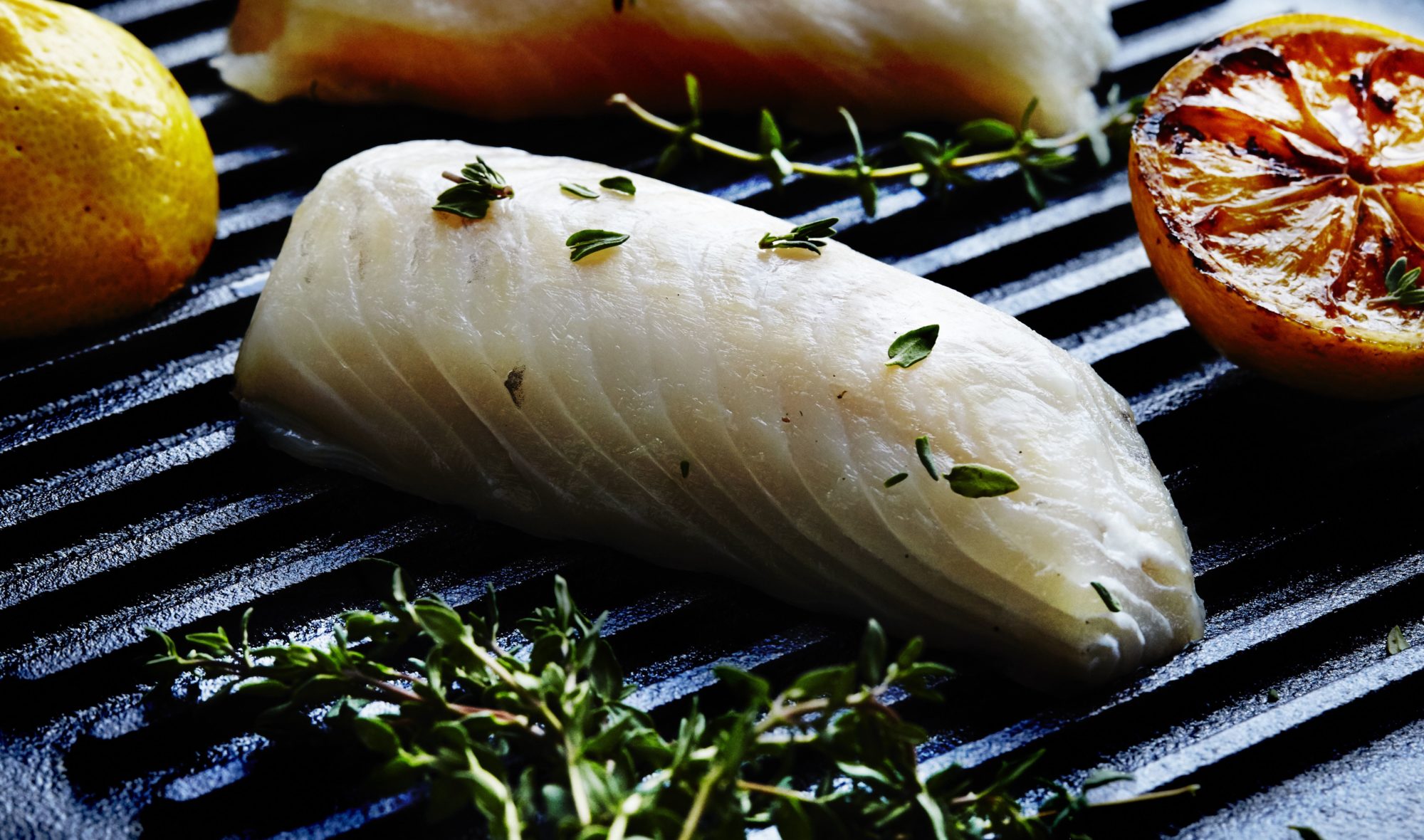
Join PN Level 2 for about $6/day! Plus, FREE Bonus worth $697! (This week only.)

Haddock is a variety of fish with a firm white flesh and a mild flavor. It can be found on both sides of the Atlantic Ocean. Widely popular as Britain's “fish and chips” it is typically sold in fillets, both fresh and smoked. Haddock can be prepared a number of ways that include poaching, baking, roasting, sauteing, and grilling.
The haddock is a salt water fish found on both sides of the Atlantic Ocean. It is easily recognized by a black stripe running lengthwise along its white side and a distinctive blotch above the pectoral fin, sometimes referred to as a “thumbprint.” A very popular fish known for its mild flavor and lean flaky texture, haddock is sold fresh, smoked, dried, frozen, and to a smaller extent, canned. It is one of the most favored fish in Scotland and Britain, served as the ever-popular fish and chips.
Haddock is usually available in fillets, but can also be bought whole or in steaks. Fresh haddock is characterized by white firm flesh with a translucent quality, while older fillets have a chalky, cloudy look to them. Smoked haddock can be off white or yellow in color (dyed) depending on personal preference. You can find fresh haddock in the seafood department in grocery stores, or your local fishmonger.
A raw fillet (weighing 193g) contains approximately 143 calories, 31.5g of protein, and 0.9g of fat. It contains no carbohydrates, fiber, or sugar.
Haddock is a good source of vitamin B6 and B12, magnesium, niacin, phosphorus, and selenium. Like most fish, haddock includes Omega- 3 fatty acids, which may provide a wide range of health benefits. It’s also worth noting that haddock is high in cholesterol (104 g).
Always choose haddock that is as fresh as possible. This is indicated by a firm texture and a pearly white appearance. When purchasing a whole fish, the eyes should be bright and clear and the gills should be red. Fresh haddock should have a slight smell of the sea. Avoid any that have a “fishy” odor.
Like all fish, haddock can be stored for a brief time in the coldest part of the refrigerator but is best eaten as soon as possible.
Tip: To keep fresh haddock extra cold, place it in a plastic bag, then in a bag of ice before storing it in the refrigerator.
Once cooked, wrap any leftovers tightly in plastic wrap or foil and store in the refrigerator for up to 3 or 4 days.
Fresh haddock has a subtle flavor and texture, and is often preferred by those who aren’t fond of stronger fish such as salmon. It is best known served battered and deep fried in the classic “fish and chips” but can be prepared in many other ways such as poaching, baking, roasting, sauteing, and grilling. Once cooked the fish should be flaky and moist.
A delicious fish chowder can also be made with fresh or smoked haddock.

The cornmeal crust provides a great crunch and the perfect contrast in texture to the soft and buttery texture of the haddock. This is an easy dish that can make you look like a seasoned home cook!
Prep Time: 15 minutes Cook Time: 15 minutes Yield: 2 fillets
Begin by per-heating your oven to 375º F.
For the Crust:
In a mixing bowl, combine all of the crust ingredients together and stir until combined. Once well combined, press and compact the mixture with your hands.
For the Haddock:
Season the haddock fillets on both sides with some salt and fresh black pepper. Place the fillets on a lightly greased pan.
Assembly and Cooking:
Cover each piece of haddock with a very thin layer of the crust and gently push it into the fish until set in place.
Place in the oven and bake for about 10-12 minutes until the fish is cooked. If the crust is not browned enough, turn the oven onto the broil setting and place the fish on the top rack until the crust is lightly browned.
Serve with your favorite sides and enjoy!
Precision Nutrition’s Encyclopedia of Food expands every single month as we highlight new foods and showcase beautiful food photography. If you’d like to stay up to date, simply click this link. From there, we’ll send you a FREE copy of our recipe book. We’ll also let you know when new and delicious foods are added to the site.
Haddock is a variety of fish with a firm white flesh and a mild flavor. It can be found on both sides of the Atlantic Ocean. Widely popular as Britain's “fish and chips” it is typically sold in fillets, both fresh and smoked. Haddock can be prepared a number of ways that include poaching, baking, roasting, sauteing, and grilling.